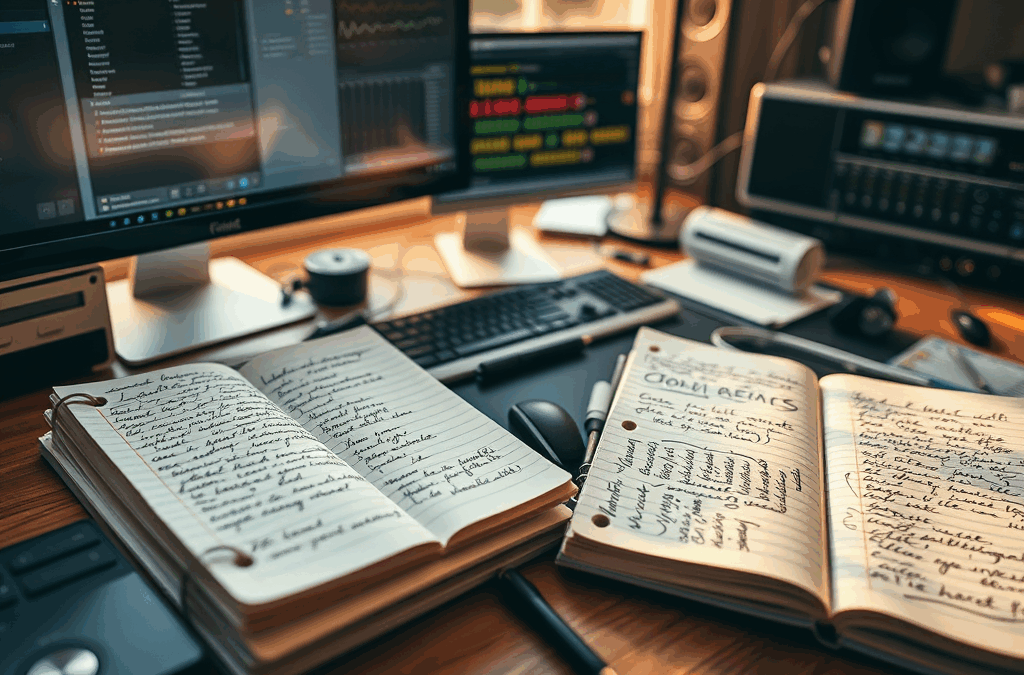
by admin | 27/102025 | Info
Ok, this blog thing here is taking shape now. At least in my mind. And if everything isn’t going too bad IRL, it will also show up here in digital letters, too. It really helps sorting my thoughts. Also it should help to keep in touch with the English language in written. With the first entry, I had my original text translated into English by AI. I also told AI to give it a different tonality. And although this really seems too work quite well, the way it rewrites the text isn’t really me. One on one translations, without changing tonality, doesn’t seem to work too good, I figured. So I decided to just write all this stuff here in the best English I can come up with, all by myself. Any grammatical errors or misuse of words are part of the experience. Like it’s not a bug, it’s a feature 😀
The website itself will also take shape towards its completion in the coming weeks. With what I have ready for the time being, that is. Sections and content are subject to change. It´s all a living process.
For this blog, it will be two main sections. For one, the monthly writing about whatever my mind is figuring is important – in the context of doing sound design, making and publishing of music and the odd off topic thing playing into it. Kind of like an editorial in a print magazine. The other will be a “Spotlight” section, highlighting some of the tools I use – be it software or hardware – that I find to be invaluable in my subjective opinion. No reviews, just showcasing and pointing out some of their features that stood out for me.
That’s it for now. By the way, general information on the blog or the website will be put into this “Information” section. So it’s all neatly organized, to be found when necessary. Like any proper sound designer should do with all things needed for work.
😉
PS: the featured image is AI generated. It’s creation got offered to me within the WordPress dialog. The corresponding prompt is AI generated too, with it’s generation based on the blog entries text. Although it doesn’t show me with with 12 fingers and two noses, this is creepy.
by admin | 07/102025 | Thoughts
October drifts in, carrying with it a sense of unease. The air feels unsettled, as if a phantom adversary lurks everywhere, fueling a constant imperative to fortify ourselves. Every leap forward invites public scrutiny and demands its own announcement. Trying to ignore all this is nearly impossible—and it inevitably siphons off energy that could be devoted to creative pursuits. Politics, however, will not be given a platform here. This blog is a canvas for my reflections, shaped by the processes of creating and transforming sound. It’s a space for exploration, untethered from character limits or targeted audiences. Here, I aim for intentional deceleration: stepping back, reflecting, and yes—thinking.
Choosing to immerse myself fully in sound design and, eventually, music production has opened up a world of discovery and boundless learning. Part of this journey involved mapping out the technical possibilities within the field. I quickly realized there’s an astonishing variety of devices and approaches to sound generation and processing. Synthesizers alone occupy a landscape so vast, it’s as if every conceivable human idea has already been rendered in hardware or software form. From the earliest attempts at crafting electronic sounds to the multifaceted practices of today, the evolution of technology and industry in this realm has been nothing short of extraordinary. I absorbed many chapters of this progression during my formative period of study and experimentation.
The dynamic interplay between old and new concepts continues with unstoppable momentum—a wild dash for ideas and recognition, each iteration faster than the last. For many, it’s not merely a race of innovation but a struggle for economic survival. Staying current grows more complex, demanding mastery of ever-evolving production techniques. Even as emerging tools like specialized software and AI-based utilities intend to make production more prolific and user-friendly, effective application still requires deliberate understanding. Taking part in this chase is demanding, and the effort isn’t always justified by the return.
While I’ve always found it invigorating to track these ongoing developments, the constant buzz does take its toll. Before it overtakes the joy of the craft, I heed the wisdom of others who have navigated similar paths. Again and again, I am reminded that focusing on a select set of core tools—and continually refining proven methods—can be invaluable in carving out a personal style. What were once technological limits are now, intentionally, embraced as creative boundaries by many musicians and producers. Consciously narrowing the scope amid endless possibilities is my strategy. The result should embody the “less is more” philosophy too.
One major tool in my practice is the modular synthesizer—complex by design, since its foundation rests on perpetual recombination. The possibilities have multiplied exponentially in recent years, offering time-honored systems in fresh configurations and introducing innovative modules that beg for evaluation. This ceaseless expansion is undeniably fascinating, but maintaining a disciplined focus—even here—is crucial, so creative energy remains central to my sound design.
Ultimately, striking a balance between appreciating the multitude of options and deliberately curating the tools I use is both my destination and my journey. I guess the old adage holds true: “the journey is the destination.” In that sense for me, the result is just a byproduct—something that might be streamed or downloaded and, hopefully, enjoyed by listeners.
Best regards, Dareka
“The day you stop racing, is the day you win the race.”
Bob Marley

